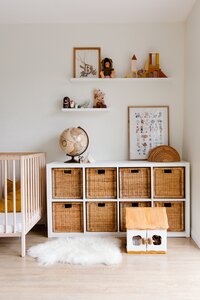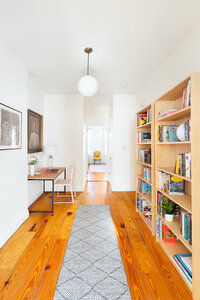How to Price Your Home Staging Project Right Every Time
Hey there!
I'm Cindy
Founder of Staged4more.
![How+to+Price+Your+Home+Staging+Project+Right+Every+Time+[PLUS!+A+Sample+Home+Staging+Pricing+Proposal!]+by+Staged4more+School+of+Home+Staging.png](https://www.staged4more.com/wp-content/uploads/2021/02/How2Bto2BPrice2BYour2BHome2BStaging2BProject2BRight2BEvery2BTime2B5BPLUS212BA2BSample.png)
As a home staging training school, we get asked these pricing questions almost daily:
“How do I charge for my home staging business?”
“If I am staging a 2 bedroom home, what’s the price for staging?”
“How much should I charge for rental furniture?”
Our answer is always a question for home stagers to ask themselves: “What is YOUR price?”
We know that when home stagers ask these questions, they are looking for THE magic number. However, every home staging business is unique. There is simply no one-size fit-all solution when it comes to creating your pricing structure for your home staging business. While there is a general pricing formula for pricing out home staging projects, the process and result will look different comparing to other home stagers in your real estate market.
The home staging business landscape has evolved over the years, and we are seeing more and more hybrid business models. The best way to figure out your home staging pricing structure is always a combination of research, testing and to examine your numbers closely.
Sounds complicated, right? Well, that’s why we created a practical pricing guide for pricing your home staging projects!
We are here to break down the most commonly asked questions about pricing your home staging projects. Whether you’re just getting started or need a home staging pricing refresher – we got you covered.
We’ve broken down the process of pricing into six components.
-
What is YOUR Price?
Here are some different methods
home stagers use to charge for
home staging projects:
1. Project-by-Project
When you are calculating your home staging projects, most home stagers make the common mistakes of calculating the costs associated for that particular home staging project, like how much did movers cost, how many hours did the home staging assistant billed me, etc.
However, the costs of running a home staging business should also be considered. Your overhead, expenses like rent, utilities, internet, website, marketing, etc. should all be accounted for when pricing our your home staging project.
When pricing out a home staging job, we usually follow the formula of costs + labor + profit margins.
The costs include the amount of inventory we moved into the home, incidentals (like gas, tips, parking tickets, etc.) plus our average costs for running the home staging business. The labor includes all the labor that goes into the home staging project. The profit margins include the ideal profit margin that is right for our home staging business. We came up our ideal % with our CPA and bookkeeper.
2. Square Footage of the Home Staging Project
This is a common practice in the builder industry, as Kevin Hitan mentioned when he came on our podcast.
3. A % of the Listing Price
There are also a lot of stagers using the listing price as a basis and charge 0.5%-1% of the listing price. This can be risky if the agents are underlisting to create a frenzy for buyers’ bids.
2. Anatomy of a Home Staging Pricing Proposal
Now that we’ve established there isn’t a magic number for pricing your home staging projects , let’s take a look at the anatomy of a home staging project estimate to calculate your price.
There are many moving parts to a home staging project: furniture rentals, movers, your assistant, your own design fees, warehouse, maintenance costs, supplies to transport and stock all of your beautiful inventory.
So what are the individual things we need to price out?
Your structure might look something like this:
-
Admin: Don’t forget it takes a human being (usually you or your assistant) to write up a proposal, home staging agreement, sending emails, calling clients, etc.
-
Travel: If your movers sat in traffic for an hour, will they bill you for their time sitting in traffic? Yes!
-
Prep and pack time before the staging installation
-
Staging day: all the labor that goes into staging. This includes your time, your assistant(s)’s time and your movers’ time. Plus any furniture, lifestyle accessories, artwork and any other home staging inventory you’ve brought in. Your home staging proposal also needs to include the home staging inventory rental costs for your staging client.
-
Remember to include labor costs for destaging, pick up time and labor, plus restocking in your warehouse.
-
Additional home staging inventory rental costs after your initial home staging contract ends: It’s important to set terms for what happens if the property has not sold after your initial home staging contract ends. This can vary based on your personal preference. We charged per diem. For example, if the rental went 10 days past contract, we bill for 10 additional days of rental. Some stagers prefer to charge 30 days ahead of time for renewal (monthly).
Edi, whom we interviewed on The Home Staging Show Podcast, charges a daily rate, but billed weekly. Here is the podcast episode where Edi shares her pricing structure.
3. Assess Your Profitability
In general, INCOME – EXPENSES = PROFIT. 
Profit is everything. This is the cash that actually makes it to your pocket and back into your home staging business. One of my business mentors once told me: “Profits solve everything.” and I still think about that all the time!
A lot of home stagers (or small business owners) get obsessed with their gross revenue number of their businesses, but they don’t look at profit margin. This can be detrimental if you don’t understand how money comes in and out of your home staging business!
A girlfriend of mine told me when she hit the $1M mark with her business, she was THRILLED, until she saw the books. They actually lost $80,000 that year! So revenue is not everything, your profit is!
So, how do you assess profitability?
Numbers. Numbers. Numbers.
Keeping track of your numbers is crucial. Numbers aren’t your thing? Hire a CPA! Let them do all the hard math, so you can focus more on the creativity. However, it is important to consistently check your metrics. This is the financial snapshot that reflects the health of your business. Definitely look at them yearly and quarterly, but we recommend a weekly glance too!
Numbers you should track can include: What are your total sales for the week? What’s your gross profit margin? What are your expenses? By looking at these big picture numbers, we can get a better idea of what we need to change to reach our profit goals.
For example, how many people do I need to call today? If I need 6 new staging projects, my typical closing rate is at 50%, then I need to call 12 people today.
When you start breaking down the numbers, you will feel empowered because you can make these numbers work for YOU.
Your financial numbers directly reflect your marketing numbers.
Assessing your numbers annually allows you to analyze where your business is now, where you want it to be and figure out how to close the gap. The gap is your room for stretch. There is that safe place where all our expenses are covered and our needs are met. Then, there’s the space where we can stretch and grow.
4. Money Mindset + Confidence in Your Pricing
Business is all about a 80% confident mindset
and 20% aligned action to back it up.
How can we feel more confident about our pricing? Confidence comes from a few factors:
-
It’s about what you know.
-
Knowing what you don’t know & how to utilize resources
-
Knowing that you’re not alone
When we think about it in these three ways, it can propel us to keep moving forward. If any of these feel shaky, then we’re going to feel shaky.
Knowing What you Know
Have you taken the time to educate yourself? (By the way, we have quite a few free trainings on our website, as well as paid courses for you to uplevel your home staging skills!
It’s important to be able to walk the talk. Your potential clients will trust your work if your work is coming from a place of authenticity and service.
One of common feedback we get from our Cash in the Cushions interior styling course students is that after they understand how to verbalize art and design theories in their home staging work, it becomes a great tool in refuting home staging client objections!
When a home staging client doesn’t like X, Y or Z in their home staging, our Cash in the Cushions interior styling course students are able to explain from a design and styling point of view. Then the home staging clients usually back down and say, “Oh, okay I see it now. That’s fine!”
Building Trust in the Long Run
When a client asks you something that you don’t know, it’s okay to respond: “Let me go do some research and get back to you.” This builds trust for the long run. We firmly believe in providing and relationship building with our potential clients. By taking the time to develop trust, your home staging clients will more likely to be more loyal to you, even if you raised your price!
You Are Not Alone
You can reach out to community, family and peers (like fellow home staging business owners or other small business owners) for a sense of support. You can find fellow home stagers and other supportive small business communities in online trainings, in your city (or in the world! Don’t think too small!), meet up, networking events, etc.
We at Staged4more actively build an inclusive and diverse community for home stagers who are passionate about building their thriving home staging businesses. We do so by creating opportunities for people to get together and exchange ideas and information, like our annual free StagerCon – a virtual conference for home stagers, live community office hours & additional resources.
It is so much harder to do it alone! Even Wonder Woman needs the Justice League!
5. Understand Your Target Market
The most important aspect of marketing your home staging business is figuring out who your ideal home staging clients are. Stagers who have worked in the industry for 5, 10 years and more often have not nailed this.
A home staging client can be anyone. Your ideal home staging client should be specific. What kind of house do they sell? Are they homeowners or real estate agents?
How you market to these two different home staging clients will differ. By understanding who your ideal home staging clients are, you can fine-tune your marketing language to really resonate with them.
People don’t want to be sold to. They want to feel valued and understood. They want to feel that you understand them and you have listened to their needs and wants. They want to feel that you are that person that they can trust to get things done.
Your target market also has a huge impact on how you price your home staging services. Multi-million dollar luxury homes are going to stage and price differently from $200k homes, because the level and s
ize of staging will be different. This chain of costs impacts your warehouse and crew size, etc.
6. Communicating Your Price to Potential Staging Clients
Communication, confidence and presentation is critical when it comes to pricing. Your communication will build trust, set appropriate expectations and set the tone of who you are as a home staging professional.
Quality communication will nip 99% of problems in the bud. Why have the headache of putting out fires when you can prevent them in the first place?
You will run into clients bargaining you over price or choosing another stager for a lower price. It is inevitable. Don’t sweat it. The key is that you are conveying your value through your pricing and your presentation.
Always Focus on the Value
In copywriting, they always say focus on the benefits and not the feature. No one cares about the square footage of your warehouse or your claims to fame. The value lies in your ability to use the right inventory to stage their home, thus selling their home faster.
The client is hiring you to help them sell their house, so make the conversation about that… the value that you bring. If you start the conversation with the price, you are implying that price is the most important consideration.
Start with value. End with price.
We hope these main pricing tips gave you a great head start. Want to take your home staging business to the next level? Then check out our complete pricing guide, where we dive into more detailed examples and offer resources to figure out a price that works for you.
What do you think about our home staging pricing advice? Do you have any tips to add? We would love to hear about them! Leave your top tips in the Comment section below
Leave a Reply Cancel reply




What Are You Looking For?
Company
About
Join the School
Events
Podcast
Home Stager Directory
International Home Staging Awards
StagerCon 2023
Subscribe to our newsletter
Contact
Student Log-In
Teach on Staged4more
Terms & Privacy Policy
Affiliate Disclosure
Contribute & Ads
Sponsorship
Join Us
FAQs
Become an Ambassador
Contact
Website Design by Local Creative
© 2025 Staged4more. All Rights Reserved
You do not send any home staging pricing proposal as indicated. You have us enter email addresses, send a link and then it asks you to create workspaces and upgrades. This is misleading.